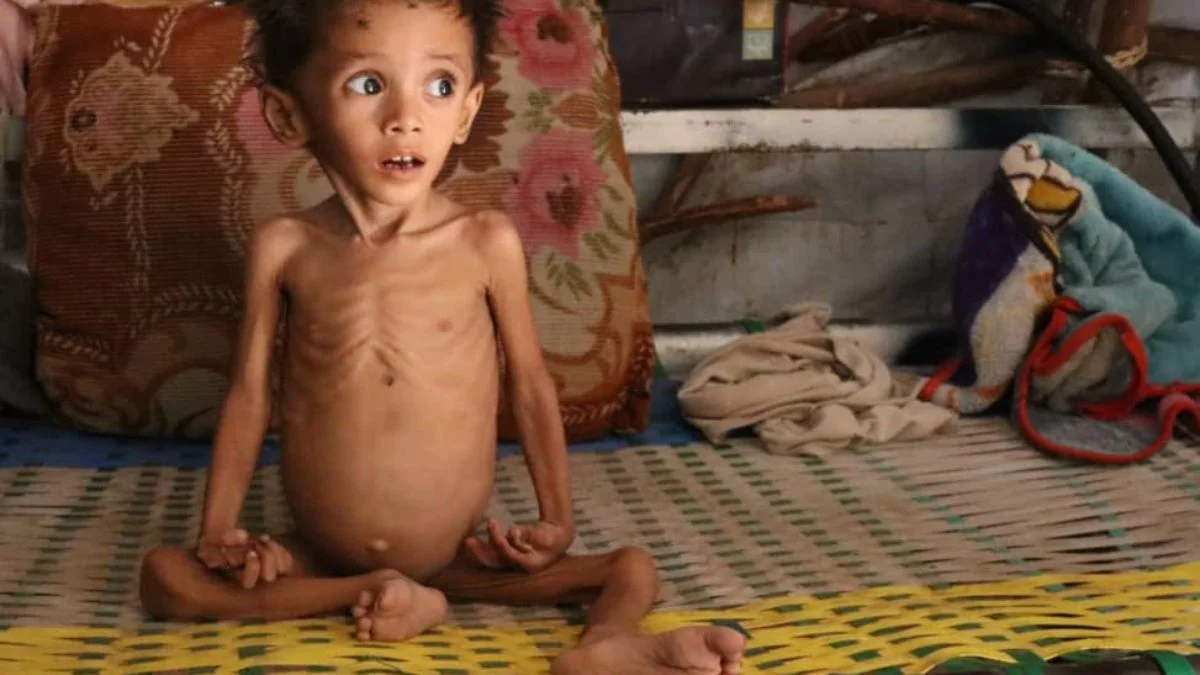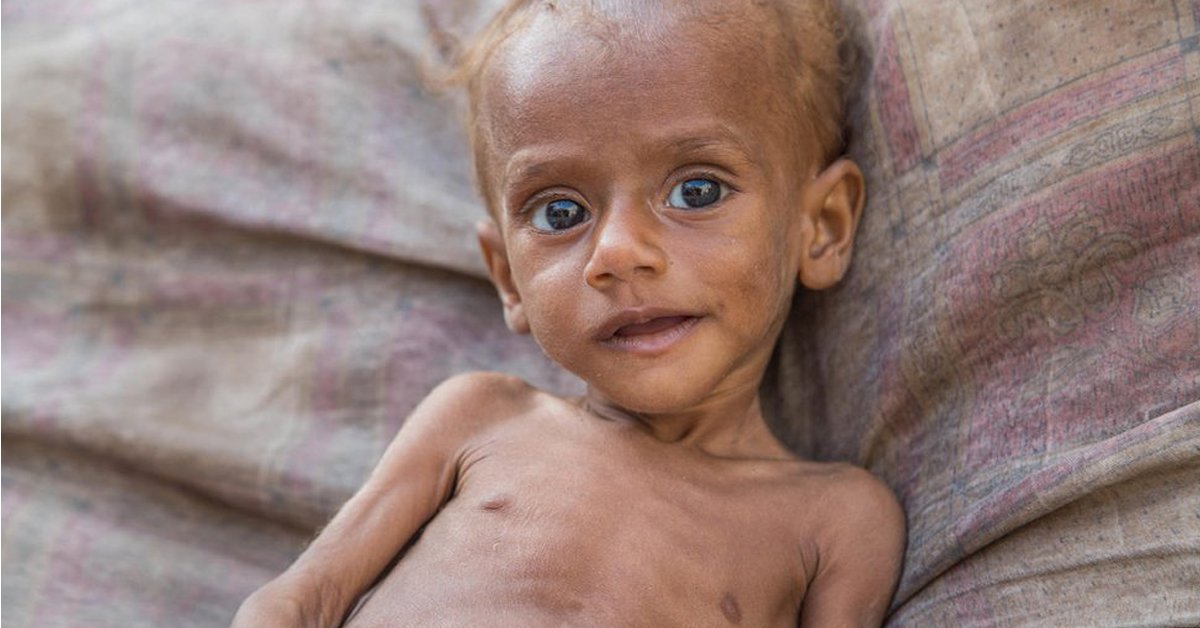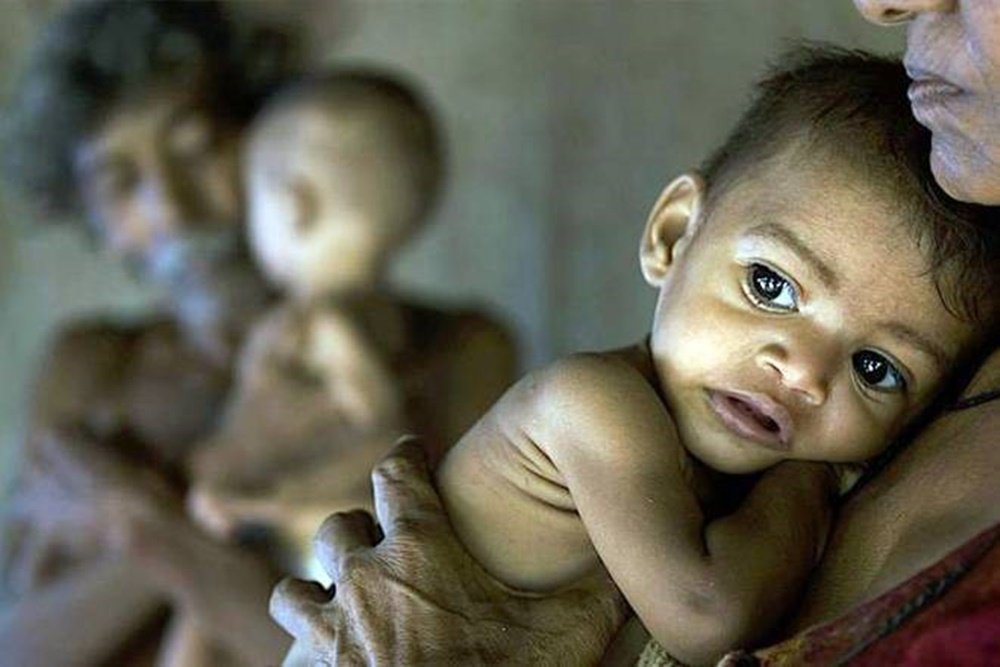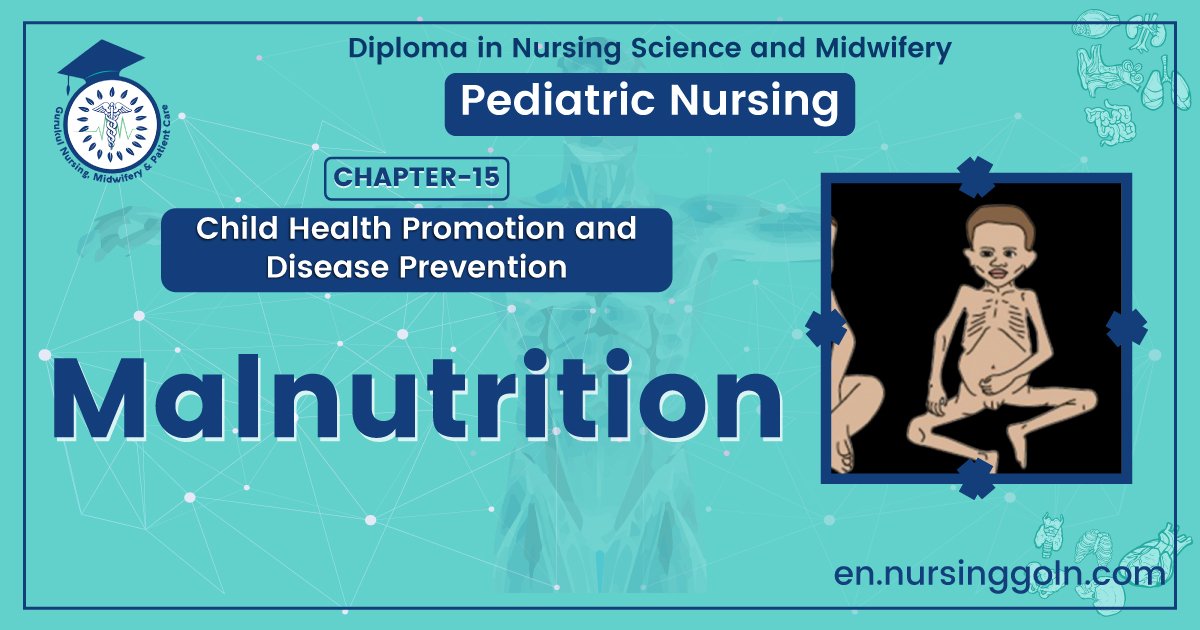Concept about Malnutrition – Health of the children has been considered as the vital importance to all societies because children are the basic resource for the future of humankind. Nursing care of children is concerned for both the health of the children and for the illnesses that affect their growth and development. The increasing complexity of medical and nursing science has created a need for special area of child care, i.e. pediatric nursing.
Pediatric nursing is the specialized area of nursing practice concerning the care of children during wellness and illness. It includes preventive, promotive, curative and rehabilitative care of children. It emphasizes on all round development of body, mind and spirit of the growing individual. Thus, pediatric nursing involves in giving assistance, care and support to the growing and developing children to achieve their individual potential for functioning with fullest capacity.
Concept about Malnutrition

Malnutrition:
It may be defined as pathological state resulting from a relative or absolute deficiency or excess of one or more essential nutrient.
Or
[OTHER DEFINITIONS – NICE TO KNOWI
Malnutrition is an impairment of health resulting from a deficiency, excess or imbalance of nutrients. It includes under nutrition, which refers to a deficiency of calories and/or one or more essential nutrients and over nutrition which is an excess of one or more nutrients and usually of calories.
(Ref: Robinson’s Normal and Therapeutic Nutrition/14th/6-7)
Types of Malnutrition:
| 1. Under nutrition: | This is the condition which results when insufficient food is eaten over an extended period of time. |
| 2. Over nutrition: | This is the pathological state resulting from the consumption of excessive quantity of food over an extended period of time. |
| 3. Imbalance: | It is the pathological state resulting from a disproportion among essential nutrients with or without the absolute deficiency of any nutrient. |
| 4. Specific deficiency: | It is the pathological state resulting from a relative or absolute lack of an individual nutrient |
(Ref: K. Park/24th/702)
Causes of Malnutrition:
Primary malnutrition/primary cause of PEM:
1. Lack of food or means to have access to food
2. Lack of elementary knowledge of food and nutrition
3. Refusal to take food
4. Fat foods
5. Lack of teeth or inability to chew
Secondary malnutrition:
1. Disorders of the GIT.
2. Protracted immobilization
3. Fever
4. Surgery
5. Drug therapydate

Preventive Measure of Malnutrition:
1. International level:
- Co-operation should be increased between the developed and underdeveloped countries for food.
- International agencies such as FAO, UNICEF, WHO are helping the government in different parts of the world against malnutrition.
2. National level:
Population control.
- Increase in food production
- Rural development & Industrialization
- Proper storage and distribution of food.
3. Community level:
- Control of communicable diseases.
- Improvement of water supply noithate
- Health education
- Significant improvement of overall living conditions of the people.
4. Family level:
- Family spacing and planning.
- Special care for nursing mother and children
- Breast feeding practice.
- Encouraging about poultry and vegetable garden.
- Education regarding nutrition and home economics.
- Sanitation of homes.
- Standardization of living
(Ref: K. Park/234/653)
Prevention of Malnutrition of a baby:
1. Promotion of breast feeding.
2. Low cost protein e.g. dhal.
3. Planning a. kitchen garden or keeping poultry.
4. Immunization against infectious diseases.
5. Family planning.
6. Nutritional education.
7. Consultation with the local doctor.

Ecological Factors Related to Malnutrition in Our Country:
Malnutrition is truly a man-made disease. The ecological factors related to malnutrition are as follows:
2. Conditioning influences:
- Infectious disease responsible for malnutrition, particularly in small children. E.g. Diarrhoea, intestinal parasites, malaria etc.
3. Cultural influences:
- Food habits, customs, beliefs, traditions and attitudes,
- Religion,
- Food fads.
- Cooking practices.
- Child rearing practices.
- Miscellaneous:
✓ In some countries, men eat first and women eat last and poorly.
✓ Chronic alcoholism.
4. Socio-economic factors:
- Poverty
- Ignorance
- Insufficient education
- Lack of knowledge.
- Lack of knowledge regarding the nutritive value of foods
- Inadequate sanitary environment,
- Large family size.
5. Food production: Increased food production should lead to increased food consumption.
6. Health and other services:
- Nutritional surveillance,
- Nutritional rehabilitation,
- Nutrition supplementation,
- Health education
(Ref: K. Park/234/653)
WHO guide line for the management of severely malnourished children in the community
(WHO, 2005):
1. Management of severe malnutrition children should usually have a community-based and a facility-based component. Children with no complications be treated in the community and with complications are referred to an inpatient treatment facility with trained staff.
2. Children with no complications, alert, have good appetite, are clinically well, are not oedematous, and have reasonable homecare circumstances.
3. Children having mild or moderate oedema and good appetite but are not severely wasted severely can also be treated at home.
4. Severe malnutrition and complications cases should be referred to an inpatient treatment facility with trained staff. Children with anorexia, with severe oedema, both severe wasting (MUAC <110 mm or WFH <70% or <-3 Z of NCHS /WHO reference) and, mild or moderate oedema, or clinically unwell.
5. In inpatients, after the complications of severe malnutrition are under control, management should normally be continued in the community. Children who deteriorate at home should be referred for assessment and further management.
6. To treat cases without complications in communities with limited access to appropriate local diets for nutritional rehabilitation.
7. Children should get 150-220 kcal/kg/day.
8. When families have access to nutrient-dense foods, severe malnutrition without complications can be managed by means of carefully designed diets using low cost family foods, provided appropriate minerals and vitamins are given.

9. Efficacy of local therapeutic diets should be tested clinically.
10. Treatment of U2 children should include support for breastfeeding and messages on appropriate infant and young children feeding practices.
11. Children < 6m need milk-based diets and their mothers support to re-establish breastfeeding. They should not be treated at home.
12. Monitoring of effectiveness of treatment should be based on weight gain of at least 5 g/kg/day for severely wasted children, low case fatality, defaulting and treatment failures, and length of stay under treatment.
(Ref: WHO, 2005)
Read more:
